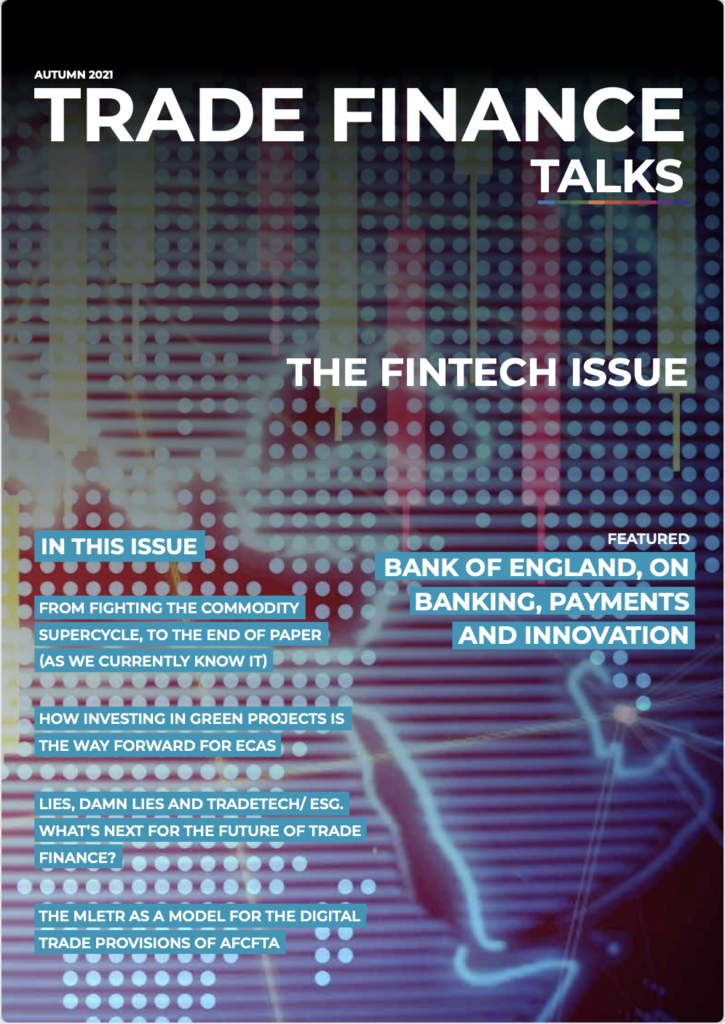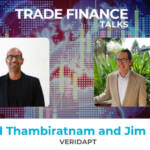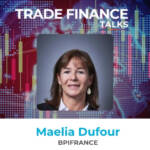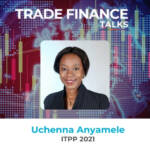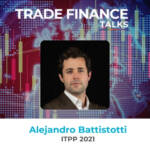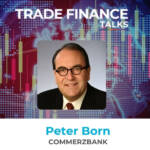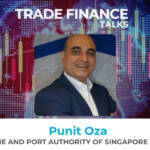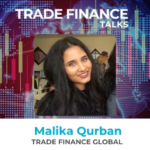Featuring:
- Carl Wegner – CEO, Contour
- Daniel Wilson – Head of Strategy and Operations, TradeLens
- Josh Kroeker Chief Product Officer, Contour
Interviewed by: Deepesh Patel, Editor, Trade Finance Global
The need for trade digitisation has never been more prevalent than it is today, especially with pandemic-induced restrictions emphasising the inefficiency of paper-based trade. With so many innovative startups coming to the scene, many stakeholders are looking towards the power of interoperability to patch together what may otherwise become another siloed industry. Is interoperability the answer to trade digitisation in a post-COVID world? And can one company magically solve all of the complex problems we have in this heavily siloed sector?
Our editor, Deepesh Patel, sat down with Contour’s CEO and Chief Product Officer, as well as TradeLens’ Head of Strategy and Operations, to discuss how fintech can come together to partner to solve these problems.
Contour and TradeLens: better together
Contour
Contour is a blockchain-based trade finance platform that aims to digitise and streamline many of the industry’s current inefficiencies. The fully operational platform has come out of industry collaboration between several prominent trade finance banks and corporate entities.
Previously known as Voltron, the platform began by focusing on Letters of Credit. This is due to the fact that, despite being a globally ubiquitous product that can help companies mitigate risk and access finance, market participants are often dissuaded from using paper-based LCs. By digitising the document and bringing everyone together onto a common platform, Contour strives to make this process easier for all parties involved.
TradeLens
Where Contour has the banks coming together into a collaborative platform, TradeLens has the carriers, ports, terminals, and customs agencies coming together. Two-thirds of the global container market, hundreds of ports and terminals, and over a dozen customs authorities are currently on TradeLens. The core idea of the platform is to bring all these participants together into a shared digital space.
A synergistic partnership, or is this just sunshine and rainbows?
In the real world, there are many different specialisations to global trade. While most providers specialise on only one – say, by tackling the financial aspects of trade – to bring value to customers they cannot afford to operate within a vacuum.
To be effective, they must also know what happens before and after their specific specialisation. An effective trade finance platform, for example, must have knowledge of non-trade-finance activities, such as the physical movement of goods and the title transfer of these goods.
This is what the partnership between Contour and TradeLens brings. Each platform can now have insight into the operations of the other and make both better than they were before.
This idea of two platforms communicating with each other is known as interoperability, and is often touted as the critical missing piece for trade digitisalisation. Once we figure out how to make everything interoperable, it will be all sunshine and rainbows for global trade. All our problems will be a figment of some distant, fading memory.
Well…not so fast.

The downside of interoperability
Interoperability may not be all it’s cracked up to be.
Imagine if Zoom and Microsoft Teams became interoperable. You could dial into a meeting using Zoom while another person could use their preference of Teams to dial in. This sounds fantastic, doesn’t it?
But what about the opportunity cost? How many other innovative and useful ideas could have been developed using the time and resources required? This pursuit of interoperability might be distracting them both from innovating and driving customer value to their respective markets.
As Kroeker says, “it is important to remember that interoperability is technologically hard – and that’s the easiest part.”
Lots of people ask for it, but when people begin waiting until everything is interoperable to use anything, they are, inevitably, hurting overall adoption. Users should join not just one platform, but multiple platforms. This is a great opportunity to really push ahead overall adoption in the industry.
If people come to accept that they will need to be on multiple platforms – Zoom and Teams, for example – and focus more on providing feedback to allow each to improve, we will be in a world where interoperability is not the most important part.
The business case for interoperability
In many cases, a lack of interoperability is not because of technological limitations, but rather because two ecosystems have different business needs. Wegner points out that “you don’t just build interoperability for the sake of building it, you must first have a product or a business reason to be interoperable.”
In global trade, there are many areas of expertise. One company may focus on shipping while another specialises in finance or container booking. Each of these areas requires different types of information to operate effectively, even though there might be some information overlap between them.
Suppose one platform manages Letters of Credit and maintains 100 fields of data. Another platform handles shipping and has 70 fields of data. If 20 of these fields overlap, then they have information that clients of each will want to be synced. In this case, there is a business reason to connect. For some platforms, there may be zero overlapping data, so there is really nothing to partner on. On the other hand, some have more than 90% of the data overlap, so they are more of a competitor than a partner.
We are not going to see a winner-take-all scenario, but we are also unlikely to see a lot of interoperability among competitors.
The key is to have these unique specialisations come together in such a seamless way that the end-user is hardly aware they are using multiple solutions. This is similar to how using your iPhone feels like one seamless experience, even though the apps all come from different providers.
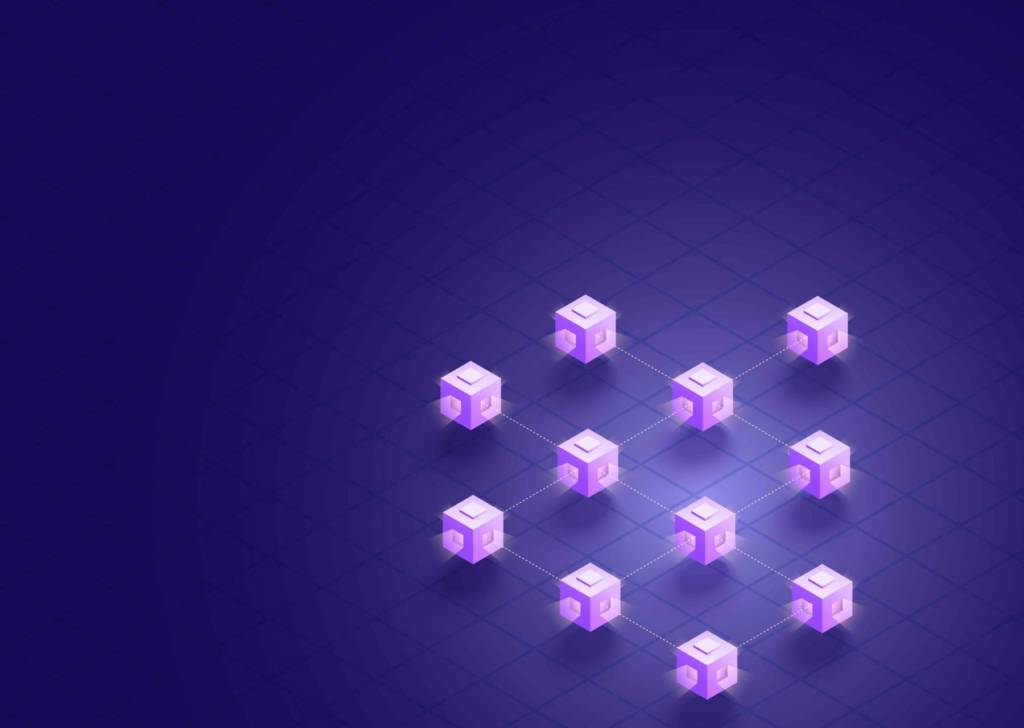
Interoperability requires standardization
Another difficulty for a lot of industries, global trade included, is that interoperability means creating standards. This requires an enormous degree of alignment between parties who have some complementary, some competitive, and some unrelated elements, but must still find a way to work together. It is a coordination problem.
In the container shipping industry, for example, there are 15 competing standards. However, as Wilson observes, “a standard is not a standard if nobody’s adopted it, or only a subset has adopted it.”
Developing true standards is, generally, about finding common denominators that stakeholders can connect on. For example, in trade finance messaging the common denominator is often SWIFT, and this is generally limited to banks only. Beyond SWIFT, the only common denominator in trade is paper.
Since we want to make it as easy as possible to integrate, it’s all about shifting business to a more optimal process using that existing standard and then working to update the standard once we are in a modern technology setting. This process of change can be seen with the Uniform Customs and Practice for Documentary Credits (UCP) from the International Chamber of Commerce. There is now an electronic supplement (eUCP) and adapting it to a modern environment is much easier than scrapping the existing standards and starting from scratch would have been.
The good news there is that there are security standards that have been well adopted, for example, the ISO 27 000 standards. It is important that security and privacy standards are a priority. At the end of the day, these platforms are transacting with commercially sensitive information, making security key.
The process of using Contour with a TradeLens integration
Putting the need for interoperability to rest
Today we discussed myths around interoperability, the realities of standardisation, and saw how partnerships in the space can drive synergistic benefits for everyone involved. Perhaps a shift in mindset is all it will take to make constant discussions around interoperability a distant and fading memory.
Trade Finance Global and the World Trade Organization (WTO), recently updated their periodic table of projects digitalising the many areas of trade with blockchain. The updated table also ranks how far into production these platforms are, and explores many of the standardisation initiatives in the various areas of the industry. This is a great resource for customers and banks to research all the different blockchain platforms, their capabilities, silos, and limitations.
Read more about the TFG / WTO periodic table here.
















